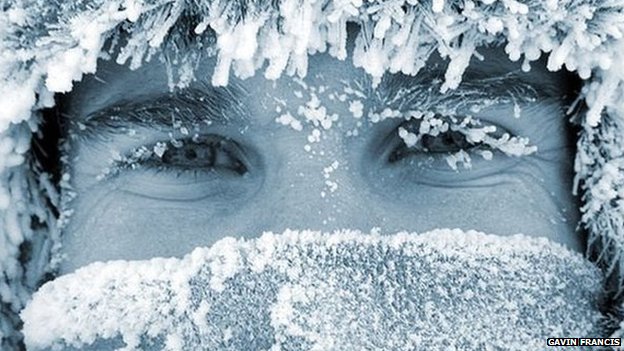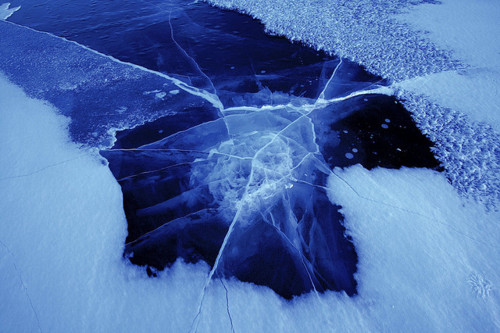Worst-Case Wednesday: How to Survive on the Ice Until the Rescue Party Arrives
Gavin Francis, photo via bbc.com
So, chances are you're not in Antartica, but in January it feels cold enough that you could be there. If somehow, somewhere, you find yourself trapped in subzero temps, stay calm. The Worst-Case Scenario Almanac: The Great Outdoors has your back (and hopefully a steaming cup of hot chocolate).
Wear several layers of loose clothing.
While exposure is the obvious danger in an arctic environment, you must also avoid overheating, which can lead to sweat that may freeze and cause hypothermia.
Breathe slowly, through one or more layers of clothing.
Very cold air inhaled too rapidly can damage the lungs and chill the entire body.
Keep all of your skin covered at all times.
Frostbite can kill human tissue in minutes under extreme conditions.
Protect your eyes with UV-blocking goggles.
Snow and ice amplify the effects of solar radiation, making snowblindness a real possibility. Keep your eyes covered at all times, even in cloudy conditions; just because the sun isn't visible doesn't mean that it isn't emitting harmful UV rays.
Melt snow and ice thoroughly before drinking.
Heating snow or ice in your mouth consumes valuable calories stored in your body and may elevate the risk of hypothermia. If you can't make a fire, use your body heat: place the snow or ice in a bag and insert it between layers of clothing. If you have the option, melt ice, which yields more water than a similar volume of snow.
Carry a long, sturdy pole while walking over ice.
Position the pole horizontally across your body, at belt level, as you move. Should the ice break beneath you, the pole may save you from falling all the way through into the frigid water below.
Remain constantly aware of the conditions of the ice and snow beneath you.
Dirty ice is weaker than clean ice of the same thickness since its dark color absorbs more heat from the sun. Snow-covered ice tends to be thinner than bare ice. In areas where there is a danger of avalanche, travel early in the morning, before the sun warms any of the snow and increases the chance of a slide. In mountainous terrain, snow often forms cornices that extend several feet from the lee side of ridges; these can easily break off when stepped on.
When crossing thin ice, crawl on all fours to distribute your weight.
Dig in during whiteout conditions.
Never travel during a severe storm, as you will quickly lose your way and expose yourself to dangers in the terrain that could be avoided if you were able to be more alert.
Build small, well-ventilated shelters.
Ice caves and snow trenches should be as small as possible to take advantage of your body heat, with holes for air to prevent suffocation. Never build a shelter out of metal, such as airplane wreckage, as it will whisk away whatever heat you generate. Don't sleep directly on the ground; create a layer of bedding made of fabric or grass to insulate your body.

Christina Schillaci
Christina is the voice behind Quirk’s social media channels and editor-in-chief of the blog. She graduated from Rowan University with her M.A. in Writing and joined Quirk in 2016. She loves weekend cooking projects, Cape May in the winter, and her dog, Rocket. Say hi on Twitter @quirkbooks or @saychristina!

